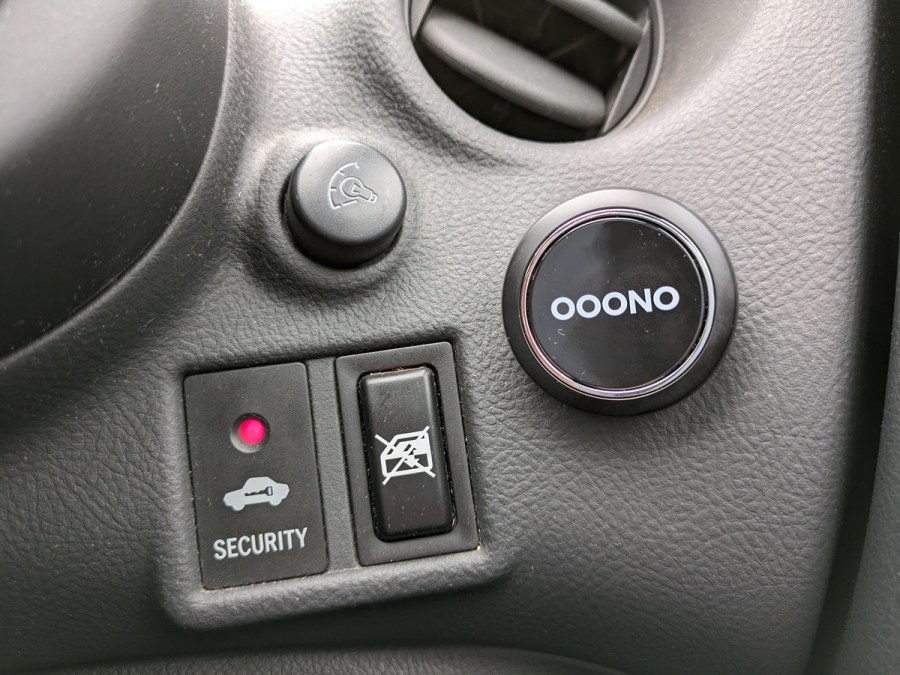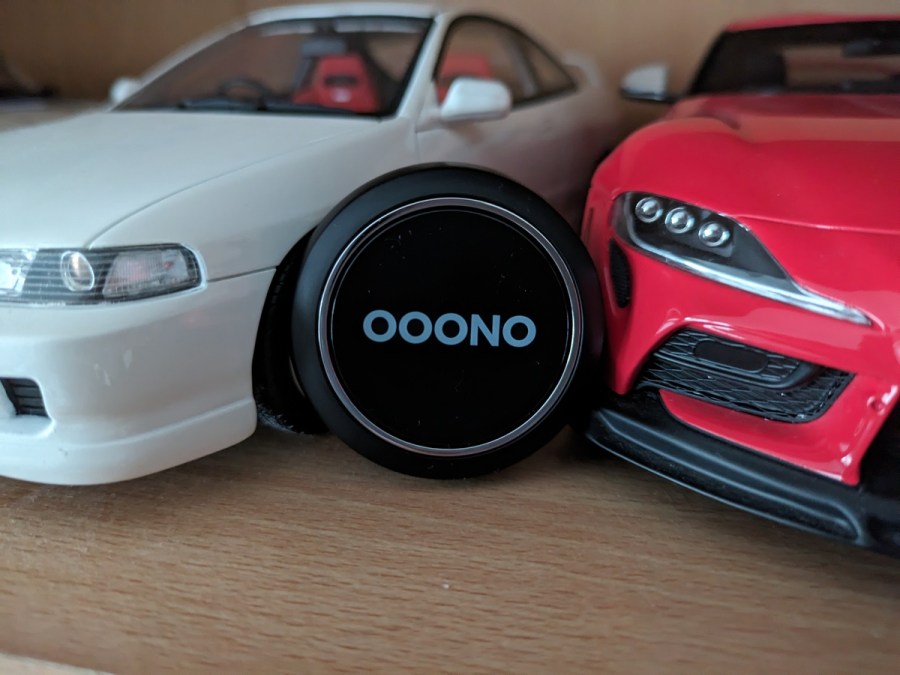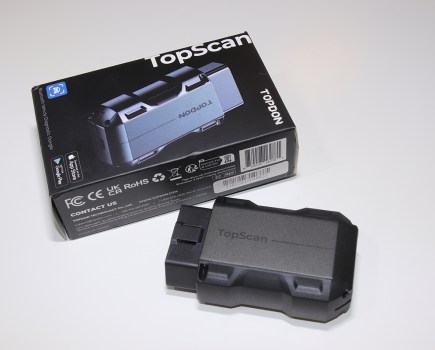RRP: £44.99, buy it here. Not available in the US.
If you’re an enthusiastic driver (like all of us here at Fast Car), you’ll want to make sure you’re on top of both your car and the road conditions at all times. The Ooono Co-Driver NO1 aims to help you achieve that, by warning you of upcoming speed cameras and road hazards so that you can adjust your driving ahead of time. That way, you’re less likely to end up in a dangerous scenario (or find yourself hit with a costly fine). On paper, there’s a lot to love about that idea, so in this review I’ll be testing the Ooono Co-Driver NO1 in a variety of environments to see if it really delivers.
Setup & Functionality
As you’re about to find out, everything about this device is… simple. As far as setup goes, that’s certainly a positive. The process couldn’t be easier. First, you download the Ooono smartphone app and then you connect the Co-Driver to your smartphone via Bluetooth. Once that’s done, the app will prompt you with a short tutorial about its basic functions. Check out the video above to get an idea of what that tutorial covers.
As should now be apparent, the Ooono Co-Driver NO1 doesn’t use any high-end laser/radar equipment – it is simply a community-driven self-report app with a speaker/lighting system attached. By piggy-backing off of your phone’s GPS, the Co-Driver will alert you when you’re approaching a previously reported speed camera or road hazard. It’ll do so through beeps and light flashes that you can tailor to your own preference. Then, if the camera or hazard is indeed there, pressing the device’s big central button will confirm the report. As far as mounting the device goes, you just remove the adhesive seals and stick it wherever you fancy inside the car. See? Simple.

Road test
Right, so that’s the theory laid out. Now how does it work in practice? To find out, I went on a several-hundred mile journey to the coast and back, during which I encountered all sorts of roads and levels of population. To get the best use out of the Ooono Co-Driver NO1, you’ll want to stick it somewhere within arm’s length and within eye sight of your seating position as the driver. As you can see, I placed mine on a part of the dashboard close to the driver’s door. This meant it was easy to access if I needed to press the button to confirm a report or report a new camera/hazard, and it didn’t get in the way of any of the buttons or features of my car’s center console.
The Ooono Co-Driver NO1 starts automatically when it connects to your phone, so there’s not even a start-up process to bother with. Simply get in your car, bring your phone along with you, and start driving.
Coverage
The first leg of my journey took me along the UK’s most notorious motorway, the M25. This would be a great benchmark to see what sort of community coverage there was in the UK – after all, if there are gaps on a road as regularly used as the M25, it wouldn’t bode well for the rest of the country. Happily, the Co-Driver picked up all but one speed camera (which I promptly reported), and in fact was possibly even a little too trigger happy. I’d get warnings for gantries where I knew for a fact that there was no speed camera even though the gantry wore the speed camera sign. And that’s the problem with a self-report platform, it does open itself up to the possibility of collating false positives from drivers who are regurgitating signage where no camera actually exists.
Speaking of false positives, while first investigating the device, I accidentally pressed it in such a way that reported a speed camera. As I was in my house, that was clearly an error, but when I went to retract the report I was surprised to learn that there’s no way of doing so. Instead, the Co-Driver app will automatically erase it if nobody else confirms the report. So, I guess that kinda works as a concept, but I can’t help but feel the process would be improved if the user could just remove their own erroneous report in the first place.
Anyway, having made it to the coast, I met up with a friend who guided me to a fairly remote street where they knew a speed camera lay in waiting. The idea was to see whether the Co-Driver’s usefulness extended to more rural parts of the country as well as the heavily populated ones. On this occasion, I received no alert. Whether this is because nobody in the area has reported it, or because locals are savvy enough to know whether it’s out of service, is hard to say. However, I will note that the Co-Driver did alert me to other cameras on more frequently-used roads within that coastal town. So make of that what you will.
Connectivity
The next topic I want to cover is connectivity. When looking at consumer reviews for the Ooono Co-Driver NO1, this popped up as a potential flaw. Various people claimed that the connectivity between the Co-Driver device and their phone wouldn’t stay stable, rendering it useless. For about 85% of my journey, I experienced no such problems. The device and my phone seemed to be communicating with each other happily, without any problems. But then, on the way back, the Co-Driver device seemed to just give up about 45 minutes from my destination.
At first I thought that perhaps the battery had drained, but that can’t have been the case – Ooono claims its replaceable lithium ion battery will last 30,000km (or 8-10 months), and I had only done about 350 miles. Besides, when I went to access it the following day, it burst into life as normal. For that reason, I can only assume that the connection dropped out, at which point I could no longer report new cameras and hazards, or be alerted to them. Frustrating.

Verdict
Having concluded my Ooono Co-Driver NO1 review, I came away from it feeling rather confused. The first thing I wanted to try to understand was: who is this product actually for? There’s no form of navigation feature, but if you use Google Maps or Waze like the rest of us, you’ll already have access to speed camera warnings via those apps (and with a much larger community of reporters). So, what’s the point of having a separate device that *might* tell you something which you can already learn by looking at your regular navigation system? The answer to that, I suppose, comes down to regional differences.
Here in the UK, Maps and Waze is allowed to feature such warnings, but that’s not the case in every country, including some European ones like France. So, if you live in a country where the laws around speed camera warnings are a little tighter, or if you’re travelling through one on an international road trip, then that is where the Ooono Co-Driver community could come in handy, at least in regards to speed cameras. Similarly, if you’re driving in the UK without GPS navigation, you’ll at least be able to rely on speed camera warnings from the Ooono. But if you’re not using GPS, chances are you know the roads well, and thus where the speed cameras are. The real-time hazard reporting could be useful in any country though, but again some navigation apps have this in-built too.
What sort of driver should buy one?
Overall, there’s a decent idea in there, but unless you find yourself in a very specific set of circumstances, I’m not convinced that this iteration of Co-Driver fully capitalizes on the potential. If you’re a new, inexperienced, or semi-reluctant driver – or if you never use GPS navigation apps, then this device would help you stay alert to your surroundings. But if you’re a driving enthusiast, I reckon you’d be just as well off using your own road knowledge and vision out of the windshield. Or, y’know…. Google Maps.








